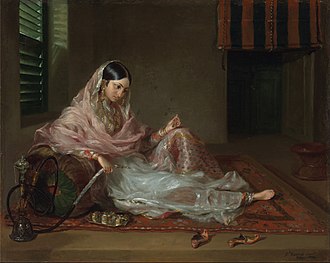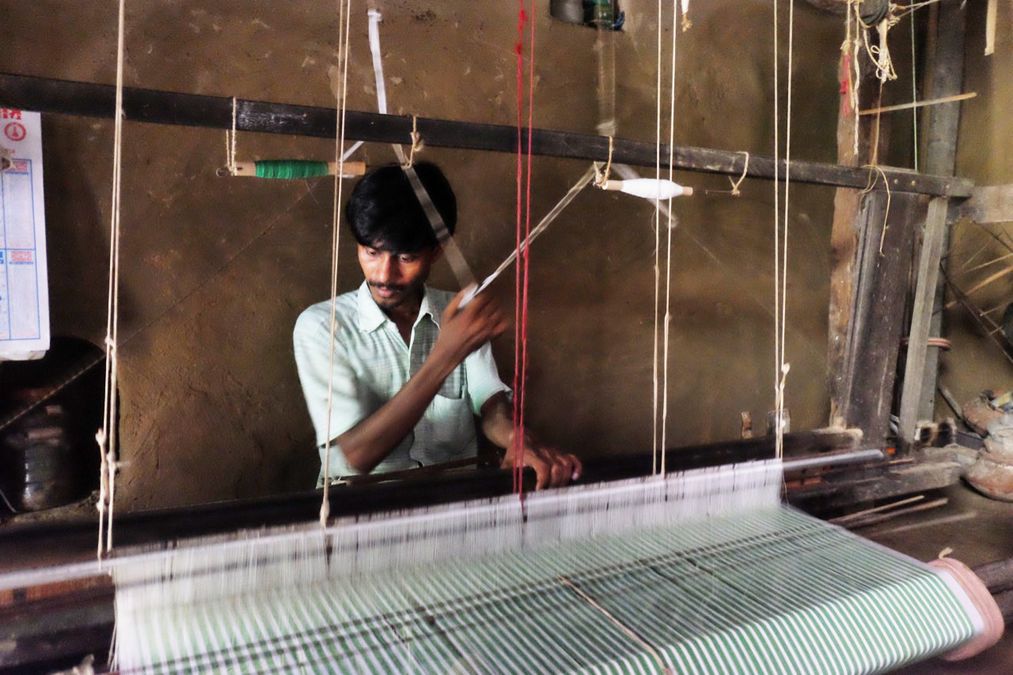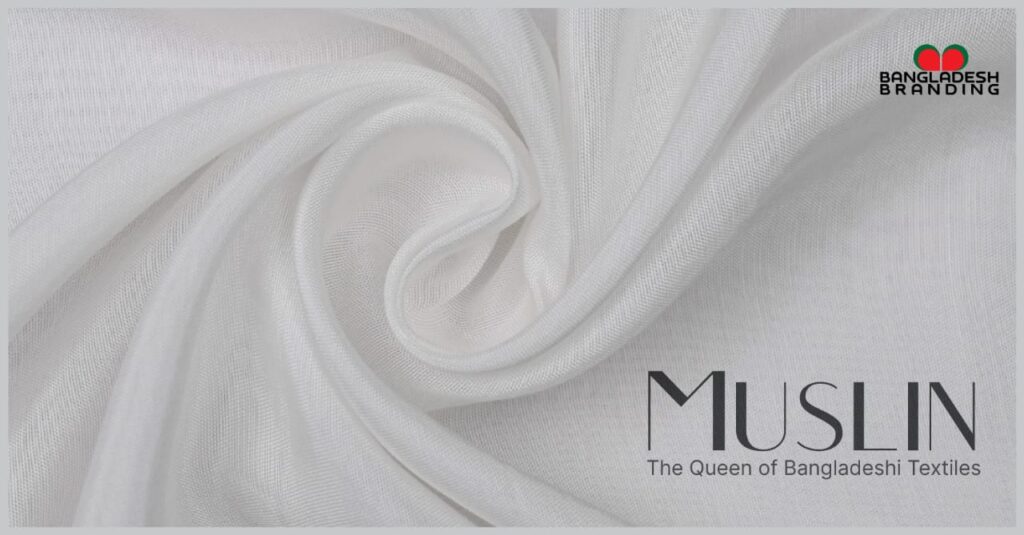Muslin, a delicate, sheer fabric woven from fine cotton, has been a staple of Bangladeshi textile tradition for centuries. Muslin, known for its lightweight, breathable properties, and intricate patterns, has won the hearts of fashionistas all over the globe.
A Tapestry of History: Muslin's Origins in Bangladesh
Muslin originated in Bangladesh during the ancient period, when skilled artisans perfected the art of weaving this exquisite fabric. The area’s rich cotton harvests, lush landscapes, and skilled weavers contributed to the rise of muslin as a valuable commodity.
Historically, muslin was a significant export from Bengal, attracting traders and royalty from all over the world. The Mughals, who were renowned for their appreciation of exquisite textiles, had a special soft spot for muslin and often adorned themselves in clothing made of this opulent material.
Derived from the name of the Indian port town Machilipatnam which was more commonly known as Maisolos in ancient times, muslin is a cotton fabric of plain weave. Hand-woven from an uncommon and delicate yarn, it was found in Bangladesh and the Indian State of West Bengal and was exported to Europe for much of the 17th and 18th centuries.
A favourite of the Romans, muslin was sought by merchants of the Roman Empire and subsequently reached other parts of Europe. During the 17th and 18th century, Mughal Bengal emerged as the foremost exporter of muslin in the world, with Mughal Dhaka as the capital of the worldwide muslin trade.
Khadi muslin was introduced to Europe during the Roman period, and a large volume of fabrics were traded. It quickly gained popularity in France and then spread throughout much of the Western world.
Duarte Barbosa, a Portuguese traveller, described Bangladeshi muslin in the early 16th century. He mentioned several different types of fabrics, including ‘estrabante’ (sarband),’mamona’, ‘fugoza’, ‘choutara’, and’sinabaka’.
Bengali muslin was traded all over the Muslim world, including the Middle East and Southeast Asia. Many Islamic regions, including Central Asia, dubbed the cloth Daka after the city of Dhaka. During British colonial rule in the 18th century, the Bengali muslin industry was brutally suppressed by various colonial policies that favored imports of industrially manufactured textiles from Britain.
In 1772, William Bolts, a legendary merchant, noted that “thumbs were cut off” to stop the production of muslin. As a result, the quality of muslin plummeted, and its finesse was nearly lost over two centuries.
Throughout history, muslin has been used transparently. Bengal’s Nawabs were regular users of muslin. Murshid Quli Khan, the first Nawab of Bengal, used to send muslin to the Mughal emperor. In the summer, Nawab’s Badshas and Amirs would wear a sort of muslin known as the Malma Khash, which was once worn by the Emperors. Because of Empress Nurjahan, the Mughal era saw the majority of the growth of muslin. She chose the Mughal harem’s fabric, muslin.
Europeans also brought in a lot of muslin to make exquisite dresses, undergarments, children’s clothes, and shirts. Famously, a semi-sheer muslin gown was painted on Josephine Bonaparte. In order to highlight their legs and other anatomical features, noblewomen would frequently dampen their muslin gowns.
The French had the best fashion sense when it came to the European luxury league tables. It was centered mostly on silk until muslin took its place, especially with the support of Queen Mary Antoinette and Empress Josephine Bonaparte.
Europeans also brought in a lot of muslin to make exquisite dresses, undergarments, children’s clothes, and shirts. Famously, a semi-sheer muslin gown was painted on Josephine Bonaparte. In order to highlight their legs and other anatomical features, noblewomen would frequently dampen their muslin gowns.The French had the best fashion sense when it came to the European luxury league tables. It was centered mostly on silk until muslin took its place, especially with the support of Queen Mary Antoinette and Empress Josephine Bonaparte.Soon after, Shor-bondo, a type of muslin, was being used by British women to make handkerchiefs and scarves. By the late 17 century, merchants had brought muslin to America. It gained popularity quickly and was widely used for everything from everyday items like curtains and children’s clothing to weddings and party dresses.These fine striped, sprigged muslins were imported from India.
Once upon a time, Dhaka’s muslin gained international recognition for its delicate texture and thinness. They ran a monopoly business across North America, Europe, Asia, and Africa at that time.
Bengali people were well-known for their exquisite handicrafts even before Dhaka was made the capital of the Mughal Empire in 1608. According to Roman writers, the most sought-after luxury item in the ancient world of civilization was “Generic Muslin.” It is regrettable that what was once Bengal’s pride has vanished into the annals of time. It is up to us to breathe new life into it and bring back the splendor of muslin.

The Craft of Muslin Weaving: Conventional Methods
MethodsThe process of making muslin is labor-intensive and requires skilled workmanship. To ensure the cotton yarn’s evenness and fineness, it is hand-spun utilizing conventional techniques. After that, the yarn is painstakingly woven on looms, frequently utilizing elaborate embroidery or jacquard designs.
Jacquard Weaving: This method enables the production of intricate patterns and designs, frequently with geometric shapes, floral motifs, or cultural symbols.
Embroidery: To add to the beauty and elegance of muslin fabrics, delicate embroidery work, such as zari (gold or silver thread) embroidery, can be added.

The Unique Qualities of Bangladeshi Muslin
Lightweight and Breathable: Muslin’s fine weave and delicate fibers make it incredibly lightweight and breathable, making it ideal for warm-weather garments.
Intricate Patterns: Traditional Bangladeshi muslin often features intricate patterns, such as floral designs, geometric shapes, and cultural motifs. Generally, these designs are incorporated into the fabric through a variety of methods, such as embroidery and jacquard weaving.
Soft and Comfortable: Because of its reputation for being silky against the skin, muslin is a plush and comfortable fabric for apparel.
Versatility: Muslin can be used to create a wide range of garments, including sarees, dresses, tops, scarves, and even home textiles like bed sheets and curtains. It’s a well-liked option for both formal and informal settings due to its elegance and versatility.
The Revival of Muslin: A Modern Renaissance
Bangladeshi muslin has seen a resurgence in popularity and preservation in recent years. There are initiatives underway to bring back old-fashioned weaving methods, assist regional weavers, and increase public awareness of the special attributes of this beautiful fabric.
Sustainable Production: There are programs in place to support the ethical and sustainable production of muslin, protecting the environment and the means of subsistence for craftspeople.
Modern Designs: Muslin is being used by designers of the present to create inventive and fashionable clothing that highlights the fabric’s beauty and versatility.
Global Recognition: Bangladeshi muslin is gaining recognition on the international stage, with fashion houses and designers from around the world incorporating it into their collections.
Add Your Heading Text Here
As efforts to preserve and promote Bangladeshi muslin continue, this timeless fabric will stand as a cultural icon and symbol of the country’s rich textile heritage. For years to come, muslin’s remarkable beauty, deft patterns, and superior quality will enthrall fashionistas and motivate upcoming generations of craftspeople.

